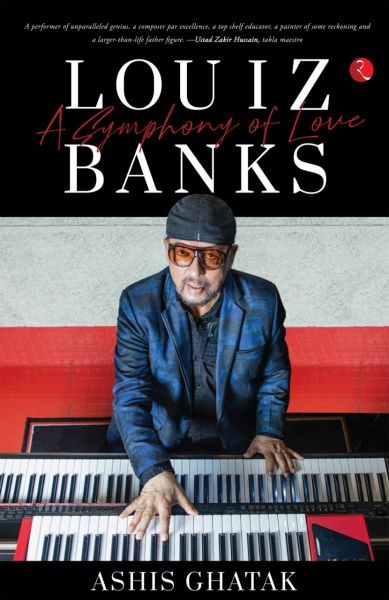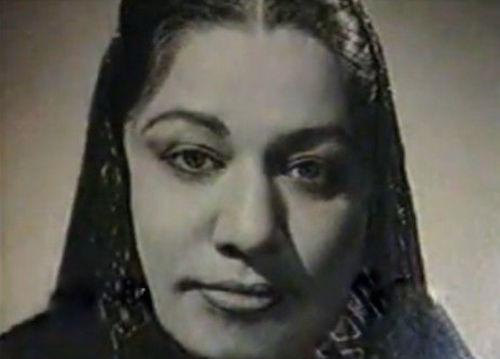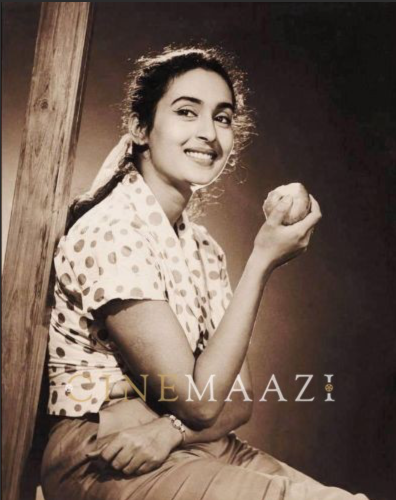This is the story of a Nepali boy from Darjeeling who became the godfather of Indian jazz.
Pushkar Bahadur Budapriti was not only the best trumpet player in Darjeeling of the ‘50s, but he was also an unsparing father every time his son Dambar played a wrong note. When Pushkar became George Banks to gel with the names of his English bandmates, he rechristened Dambar Bahadur Budapriti as Louiz Banks.
George was the best music teacher Louiz could ever hope for, and the most endearing lesson the young Louiz learnt was a three-step process to become a successful musician: imitation, integration and innovation.
The musical journey of Louiz Banks, the Indian counterpart to the modern-day Jazz legends like Herbie Hancock and Chick Correa, spans over five decades and is steeped in surprising twists and turns. Starting his career as a pianist with a band in Kolkata, he first went to Mumbai at the invitation of the musical genius R.D. Burman. Inspired by the opportunities the city presented, Louiz soon made Mumbai home and became the number one music director for advertisements.
Packed with anecdotes shared by the musician himself and those narrated by other musical stalwarts associated with him, the book gives a fascinating insight into life of a dynamic musician who has extended the boundaries of his craft. The book also goes back into the nation’s colonial past to search for the roots of Indian jazz and offers a fascinating glimpse into the socio-political and cultural scenario of the time.
This is a delightful biography of a brilliant musician.
Following is an excerpt from Ashis Ghatak's Louiz Banks : A Symphony of Love.
In Hindi films, music is seen first and then heard. The instrumental sections of songs often got overshadowed by the antics of the stars who would be lip-syncing the lyrics. Hindi film heroes earned larger than life stature from their multi-dimensional proficiency in performing superhuman stunts and also playing a wide range of musical instruments. In nightclub sequences, heroes would often pick up a trumpet or a saxophone and swing their bodies with exaggerated movements. The flamboyance of a dashing hero often rode on the scintillating drumsticks of a drummer. Piano playing heroes, on the other hand, were pitted as more mellow, reflective and much less flashy. The piano in Hindi films was more of a musical vehicle to express romantic love, lovers' disunion and an effective ploy to melt the stony heart of the lady-loves who had become turncoat. And in many cases, the funny part was the way the shots were taken. Often heroes were seen waving their hands about, faking the movement of playing the piano while there was no piano in the soundtrack. In many cases it happened that the heroes were seen lost in the mood of pressing the keys but the sound in the soundtrack was from a sitar or a tabla.
These anomalies amused Louiz a lot when he saw the picturization of his tune on Shashi Kapoor in Mukti (1977). But soon he came to terms with the way films were shot and how songs used to get picturized. Manohari Singh had once said in an interview that he would find his blood boiling in irritation when he saw film heroes faking to play the saxophone with ease on screen, whereas in reality Manohari had put his heart and soul into it while composing it.
Louiz would be consulted wherever a solo piano run was needed as an essential part for embellishing the song. Sometimes a small piano filler could change the total complexion of any song.
Louiz would be consulted wherever a solo piano run was needed as an essential part for embellishing the song. Sometimes a small piano filler could change the total complexion of any song. In the second interlude music of the song ‘Jeevan Ke Har Mod Pe' (
Jhootha Kahin Ka) Louiz's piano solo sounds terrific while the other sounds create a crescendo and prepare a space for the piano bridge. It lent a telling effect to the entire composition. The story of
Baseera (1981) offered scope for
R.D. Burman's reflective scores, and the unparalleled combination of R.D. Burman and
Gulzar created something of an added sonority in the compositions.
Lata Mangeshkar's voice and Louiz's piano carried that sensibility in ‘Jahan Pe Savera Ho’. At the crux of a dramatic situation, Shashi Kapoor, seen as a greyed older man, plays the piano and reminisces his early days. R.D. Burman used Louiz's piano solo in the refrain at those crucial junctures of the film where the protagonists would return to the days of happy union and marital bliss. The
Rajesh Khanna starrer
Kudrat (1981) had a couple of all-time super hit songs. Still, a relatively lesser-heard
Asha Bhosle number `Sajti Hain Yun Hi Mehfil' was appreciated by sincere music lovers. The piano used in the song added to the melody of the tune. With the use of electronic keyboards becoming increasingly prominent in Hindi film music, Louiz was often employed as a keyboardist. Whenever the track needed an exuberant or youthful feel and required the use of two keyboards, the Louiz-
Kersi duo would be playing in tandem. The Louiz-Kersi combination was used to a significant effect in the rollicking dance competition number of
Sanjay Dutt's debut film
Rocky that was released in the same year as Kudrat. The jazzy and glitzy club dance sequence of ‘Aa Dekhe Zaara’ ends with two electrifying solos on keyboards. In a song sequence of the film
Teri Kasam (1982), Kersi and Louiz were filmed playing inside a recording studio as
Kumar Gourav, the male lead lip-synced an
Amit Kumar number 'Dil Ki Baat Kahin Lab pe na Aa Jaye'. About the song, Louiz said, 'I played two notes with echo delay in the whole song. That was the magic of Panchamda. That little effect brought in by the echo delay changed the texture of the song. The song was a super hit.’
Sometimes as ill-luck would have it, some beautiful compositions would be chopped and were not included in a film. In
Shaukeen (1982), a lovely little duet by
Sapan Chakrabarty and
Chirasree Mukherjee, 'Hum Tum Aur Yeh Nasha' had excellent piano pieces. But, the recorded song couldn't find a place in the film.
It was as if a digital revolution was silently swamping over the acoustic sounds. With Kersi and Louiz at his behest, Burman ventured into this domain with vigour and churned out magic with equal élan as he had done with pure acoustic sound.
Soon, R.D. Burman began to experiment more with electronic sounds. The Bollywood soundscape itself was in a state of flux. Acoustic instruments were gradually giving in to the synthesized sound of keyboards. It ushered in a new era of music-making, where alongside acoustic sounds, there was a liberal dose of electronically processed sound. The availability of the numbers of sound that the modern synthesizers could produce resulted in music directors using those more. It was as if a digital revolution was silently swamping over the acoustic sounds. With Kersi and Louiz at his behest, Burman ventured into this domain with vigour and churned out magic with equal élan as he had done with pure acoustic sound. But there was always a golden mean. The pristine sound of acoustic instruments could never be replicated with gadget-generated sound waves. So, besides a Kersi Lord arpeggio in Roland Jupiter, Yamaha DX7 and Ensoniq ESQ-1, there would always be a Louiz Banks piano solo. The Kersi-Louiz combination was heard in abundance in many films of the time including some prominent films like
Pukar,
Mahaan and
Betaab (all released in 1983). The gusto and enthusiasm of the juvenile gambol in Betaab's title music, where the male lead
Sunny Deol burst forth on horseback, came from the juxtaposition of scintillating rhythm of guitar and keyboards. In the same year, two other films released where Louiz's piano found immortality as
Kishore Kumar and R.D. Burman belted two of their biggest superhit songs of all time. The iconic piano solo in the intro of ‘Jeevan Ke Din' of
Bade Dilwale (1983) was one of the most sonorous and extended piano solos ever composed. Louiz's class and sublimity were stamped all over the piano piece. His piano solo was called for again when the situation demanded something reflective as in the title track of
Agar Turn Na Hote (1983). A song recorded for a not-so-memorable film
Zameen Aasmaan (1984) had left a very lasting impression on a young flautist of the team, Pandit Ronu Mazumdar. He remembered the keyboard solo that comes after his flute in the prelude of ‘Aisa Sama Na Hota' to be, ‘something [I have] never heard in the keyboard before. It was so beautiful.’ On that day the young and aspiring flautist thought of releasing a personal album, if ever such a time came, with his respected and beloved 'Louiz dada'. His dreams came true years later when Ronu Mazumdar's album
Ekatman (2001) was released and Louiz played the piano solos with Ronu's flute. Like the song mentioned in the 1984 release, many significant compositions of R.D. Burman got lost because of the appalling films in which they were used. Thanks to the re-evaluation of the greatness of R.D. Burman after his demise, so many great tunes were unearthed. Some music pieces came to be acknowledged many years after they were composed. Lesser heard songs like 'You Are My Darling' (
Hum Naujawan, 1985) and `Aaj Ka Din' (
Anokha Rista, 1986) had melodious use of piano.
This has been reproduced from the book Louiz Banks : A Symphony of Love.
The banner image did not appear with the original publication and may not be reproduced without permission.








.jpg)


